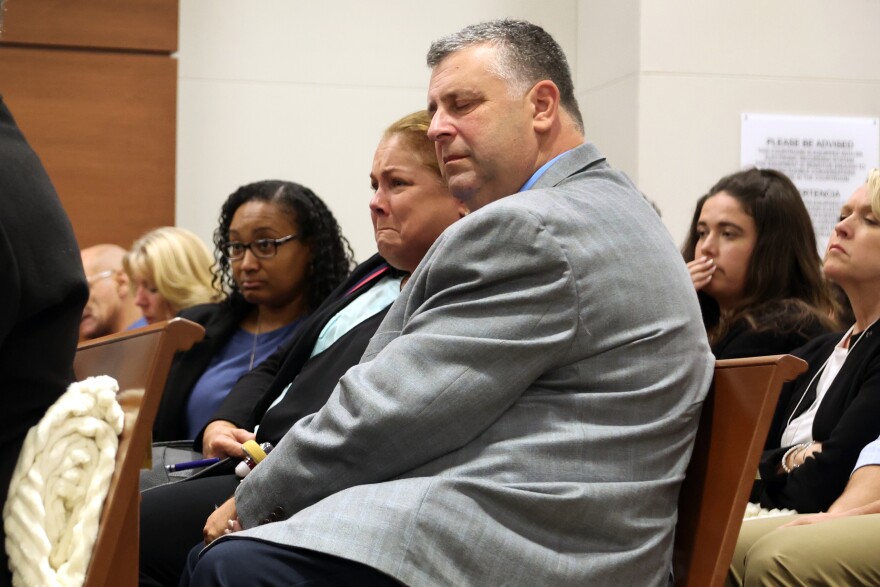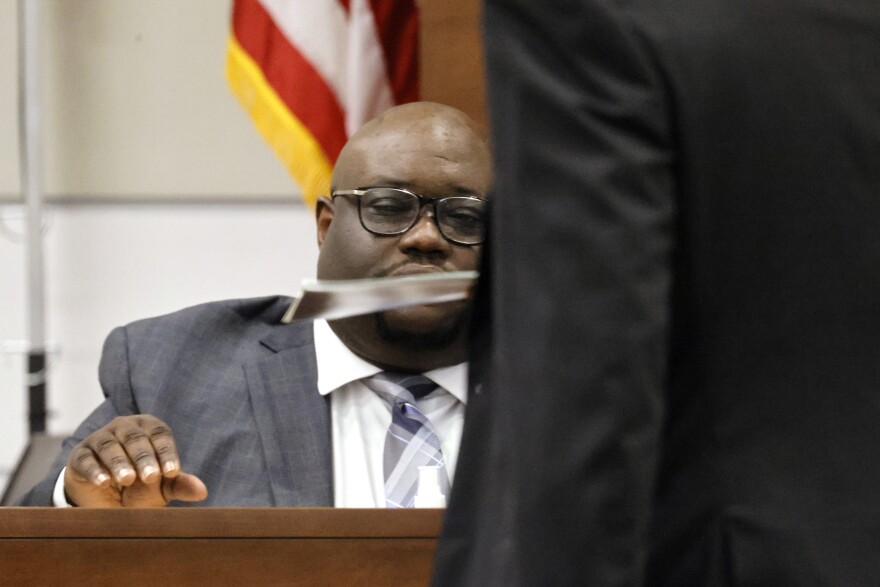The death penalty trial for the Parkland school shooter is rare. And so is the evidence that jurors are seeing.
They’ve had to look at autopsy photos of murdered kids. And they even toured the crime scene, where dried blood is still pooled on the hallway floors nearly five years later.
Would showing graphic evidence of violence move leaders to take action? It’s not a new question — but it's once again part of the national debate over how to prevent gun violence.
Tony Montalto lost his daughter Gina that day. She was 14.
“I firmly believe that I would rather remember my daughter in life as being full of life, the way she was present for our family, as opposed to how she died," he said.
WLRN is committed to providing the trusted news and local reporting you rely on. Please keep WLRN strong with your support today. Donate now. Thank you.
Montalto doesn't believe that public opinion would shift if people saw the photos of the crime scene at Marjory Stoneman Douglas High School.
"I think it would be much more impactful to force people to listen to the testimony that was given in court regarding the autopsy results," he said.
Autopsies have been detailed in court for each of the 17 victims.

One of the bullets that killed Gina passed through her pericardium, the sack that holds the heart, according to Dr. Marlon Osbourne.
During Osbourne's testimony, photos were shown to the jurors, lawyers and the judge. Relatives of the victims and others in attendance don’t have to see these photos, and most don’t want to. A few reporters are permitted to see graphic evidence at the end of each day and are only allowed to take notes on pen and paper.
Stefan Schmitt is is a project leader at Florida International University’s Global Forensic and Justice Center.
“Using other people's misery for some political end — even though the political end might be noble, right? — that's unethical," he said.
Showing the evidence to jurors though, Schmitt said, is essential for prosecutors.
“It really highlights the brutality of the use of such weapons,” he said. “When these weapons are designed to kill no matter where they hit you."
Schmitt has worked with the United Nations documenting war crimes around the world.
While he disagrees with using photos of victims to prove a point, he does acknowledge that there are historical examples of when it's been powerful.
He brought up the photo of the Vietnamese child Phan Thi Kim Phuc running naked after being burned by a napalm bomb in 1972.
“Her story told the story of Vietnam. If that image wouldn't have been published, there would have been much less outcry against the inherent inhumanity of that or any other war.”
Lorna Veraldi is a lawyer and a retired media law and ethics professor at FIU. She argued seeing graphic evidence could change people’s minds.
“The video of George Floyd's murder, which was a very hard-to-watch piece of video, I think really had an impact in helping people understand what police brutality and misconduct is," she said.
Veraldi said journalists have to weigh the need to inform the public about crimes with the potential harm it could do to a victim’s family.
Ultimately she’s in favor of the press being able to make the decision to publish graphic evidence.
“People don't really understand in the abstract in the way they understand in specific concrete detail," she said. "It's one thing to talk about the statistics of, for instance, gun violence. It's another thing to show people the actual consequences of that.”
In Florida, autopsy photos are exempt from public records law. So is police body camera footage from when officers respond to a mass shooting. That law was passed a year after the Parkland shooting.
Days after the 2018 shooting, several state lawmakers walked the halls and classrooms of the 1200 building. It helped lead to changes in Florida’s gun laws.
For Tony Montalto, the detailed descriptions of the carnage presented in trial should be enough for people to change their minds.
He just doesn't want his daughter to be remembered as a victim. Instead he chooses to remember who she was in life.
“Gina loved to do volunteer work, especially if it involved helping kids. She was also a Girl Scout and active in our local church," he said in court, reading his victim impact statement.
"Gina was known to all as an avid reader," he said. "One of her favorite quotations was, ‘I'm not choosing one of your paths. I'm making my own.’ She was indeed a very independent girl. Gina was not a bystander in her life. She was a vibrant participant."
Montalto's wife, Jennifer, also read a victim impact statement during the trial — as did families of the other 16 people killed that day.
The Montaltos formed Stand With Parkland to advocate for public safety reforms focused on the safety of children and staff at school.




